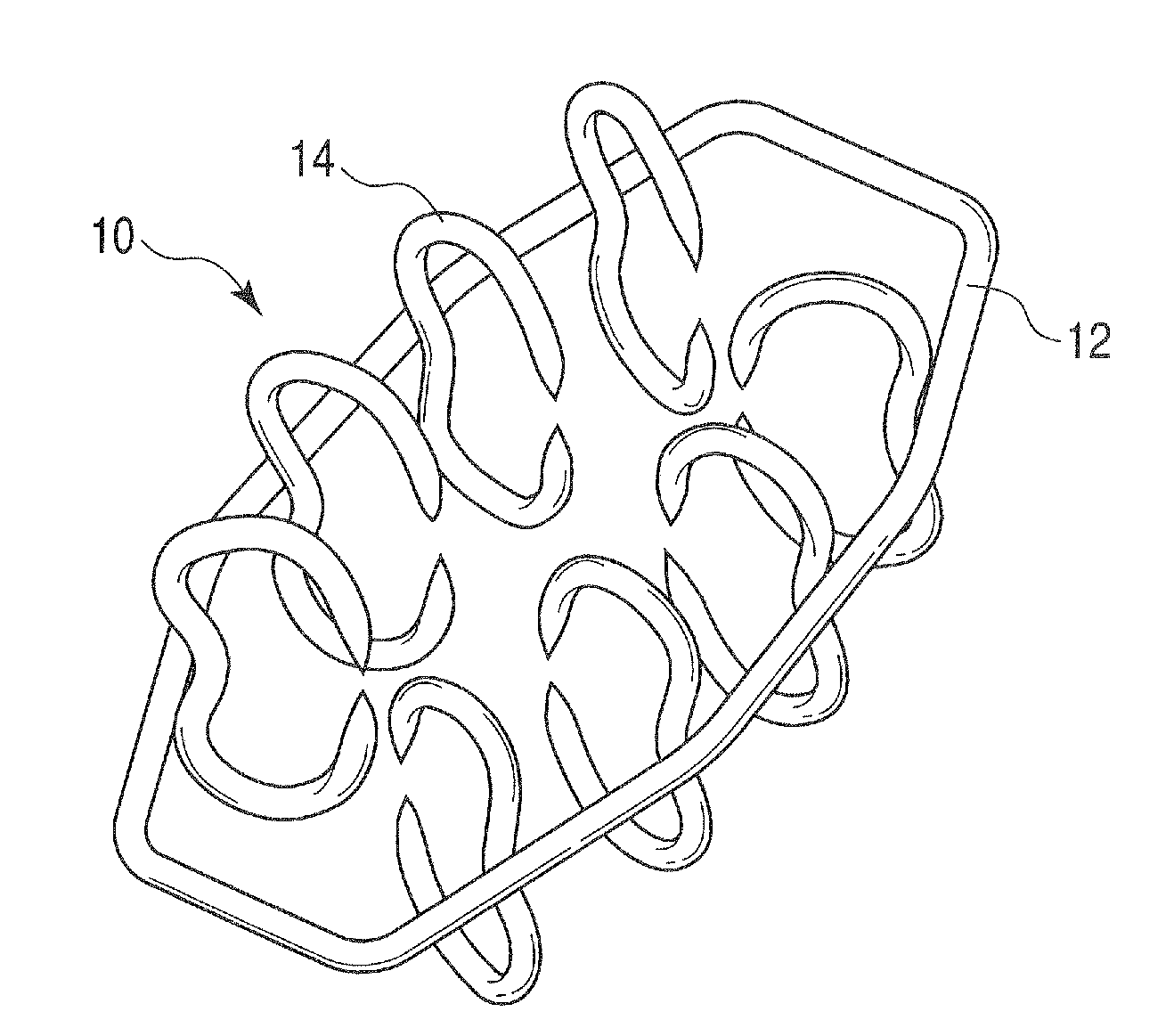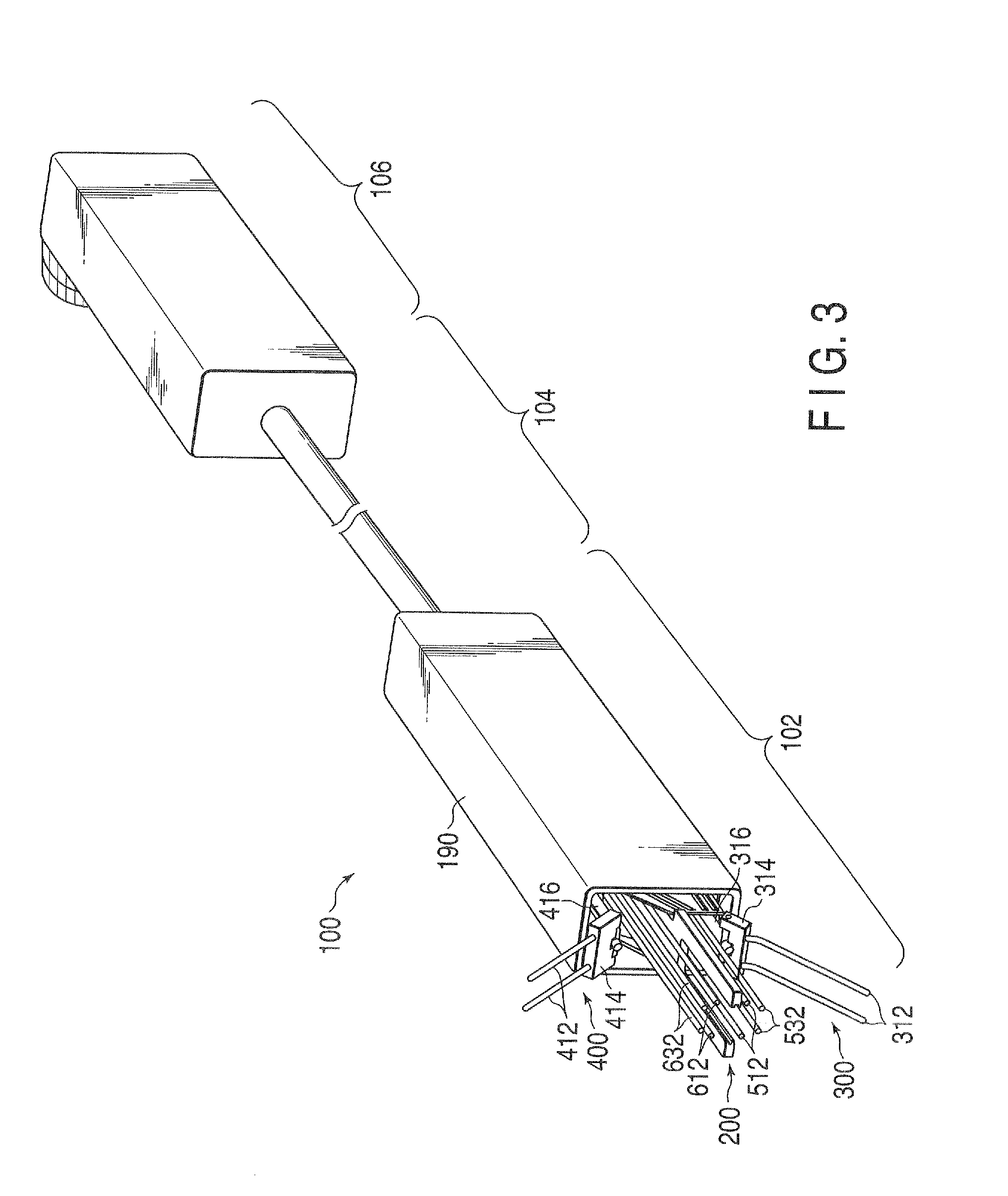Hollow tissue inosculation apparatus
a technology of inosculation apparatus and hollow tissue, which is applied in the field of hollow tissue inosculation apparatus, can solve the problems of not yet established, minimally invasive procedures being investigated
- Summary
- Abstract
- Description
- Claims
- Application Information
AI Technical Summary
Benefits of technology
Problems solved by technology
Method used
Image
Examples
Embodiment Construction
[0067]An embodiment according to the present invention will now be described hereinafter with reference to the accompanying drawings.
[0068]The present embodiment concerns a staple and a hollow tissue inosculation apparatus to inosculate two hollow tissues to each other. The hollow tissues are specifically blood vessels.
[0069]The staple as a fastening to inosculate two hollow tissues will be first described with reference to FIGS. 1 and 2. Each of FIGS. 1 and 2 is a perspective view of the staple according to the present embodiment. FIG. 1 shows the staple in a natural state, and FIG. 2 shows the staple attached to the hollow tissue inosculation apparatus.
[0070]As shown in FIGS. 1 and 2, the staple 10 has an elastically deformable generally ring-like ring member 12 and a plurality of elastically deformable bent staple pins 14. Each staple pin 14 is fixed on the inner side of the ring member 12. An axis of the ring member 12 is on a plane, an axis of each staple pin 14 is on a differe...
PUM
 Login to View More
Login to View More Abstract
Description
Claims
Application Information
 Login to View More
Login to View More - R&D
- Intellectual Property
- Life Sciences
- Materials
- Tech Scout
- Unparalleled Data Quality
- Higher Quality Content
- 60% Fewer Hallucinations
Browse by: Latest US Patents, China's latest patents, Technical Efficacy Thesaurus, Application Domain, Technology Topic, Popular Technical Reports.
© 2025 PatSnap. All rights reserved.Legal|Privacy policy|Modern Slavery Act Transparency Statement|Sitemap|About US| Contact US: help@patsnap.com



